
Despite the name, it's prone to smudges, so our experts have revealed how to clean stainless steel properly, including methods and tricks to get yours gleaming.
No matter if you're scrubbing a sink or polishing appliances, the gist of cleaning stainless steel remains the same, with some key pointers to prevent streaks, scratches, and smears.
Here, professional cleaners have spilled their best cleaning tips so you can get your stainless steel sparkling in no time.
How to clean stainless steel like a pro
Before you start cleaning stainless steel, check the manufacturer's instructions. There are several stainless steel grades on the market, and some are more durable than others, meaning that some can withstand harsher cleaning products better than others.
The most common grades for household use are durable 304, often used for appliances and utensils, and 430, a less durable stainless steel used for some indoor appliances.
Daily cleaning for stainless steel

For daily maintenance, you will need the following essential cleaning supplies:
- Warm water: preferably distilled water, available at Target, to avoid watermarks when cleaning stainless steel.
- A soft cloth or sponge: The Mr. Siga Microfiber Cloths, from Walmart, are ideal.
- A lint-free towel: Muslin cloths, available at Walmart, are surprisingly efficient for drying stainless steel without streaks and dust.
- A multi-surface cleaner: The Attitude Multi-Surface Cleaner, from Walmart, is free from toxic chemicals and additives for a healthy home.
Alicia Sokolowski, president and co-CEO at AspenClean, begins, ‘For everyday maintenance cleaning, we recommend spraying a natural cleaner onto your stainless steel surface and then wiping it down with a microfiber cloth. Make sure to always go with the grain! This combo helps cut through grease, fingerprints, and grime effectively without leaving any harsh chemical residue behind.’
For stainless steel cooking tools and pans, switch the multi-surface cleaning spray for gentle dish soap, such as Dawn, from Walmart, and distilled water. Again, use a soft cloth to remove residue and grease.
With the stainless steel clean and grease lifted, finish the process by wiping the surface over with a clean cloth dampened with water (or rinse under a tap if cleaning stainless steel pans) and dry thoroughly with a lint-free towel.
Removing stains from stainless steel

Contrary to the name, stainless steel can stain, especially if it is a heavily used stainless steel pan.
To tackle this, Petya Holevich, house cleaning expert and supervisor at Fantastic Services, says, ‘If you’re dealing with stubborn, stuck-on grime or stains, mix baking soda [we recommend Arm & Hammer Baking Soda, from Walmart] with a little water until it forms a paste. Apply it gently with a soft cloth or sponge, scrub lightly along the grain, then rinse with warm water and dry the surface thoroughly.’
Polishing stainless steel
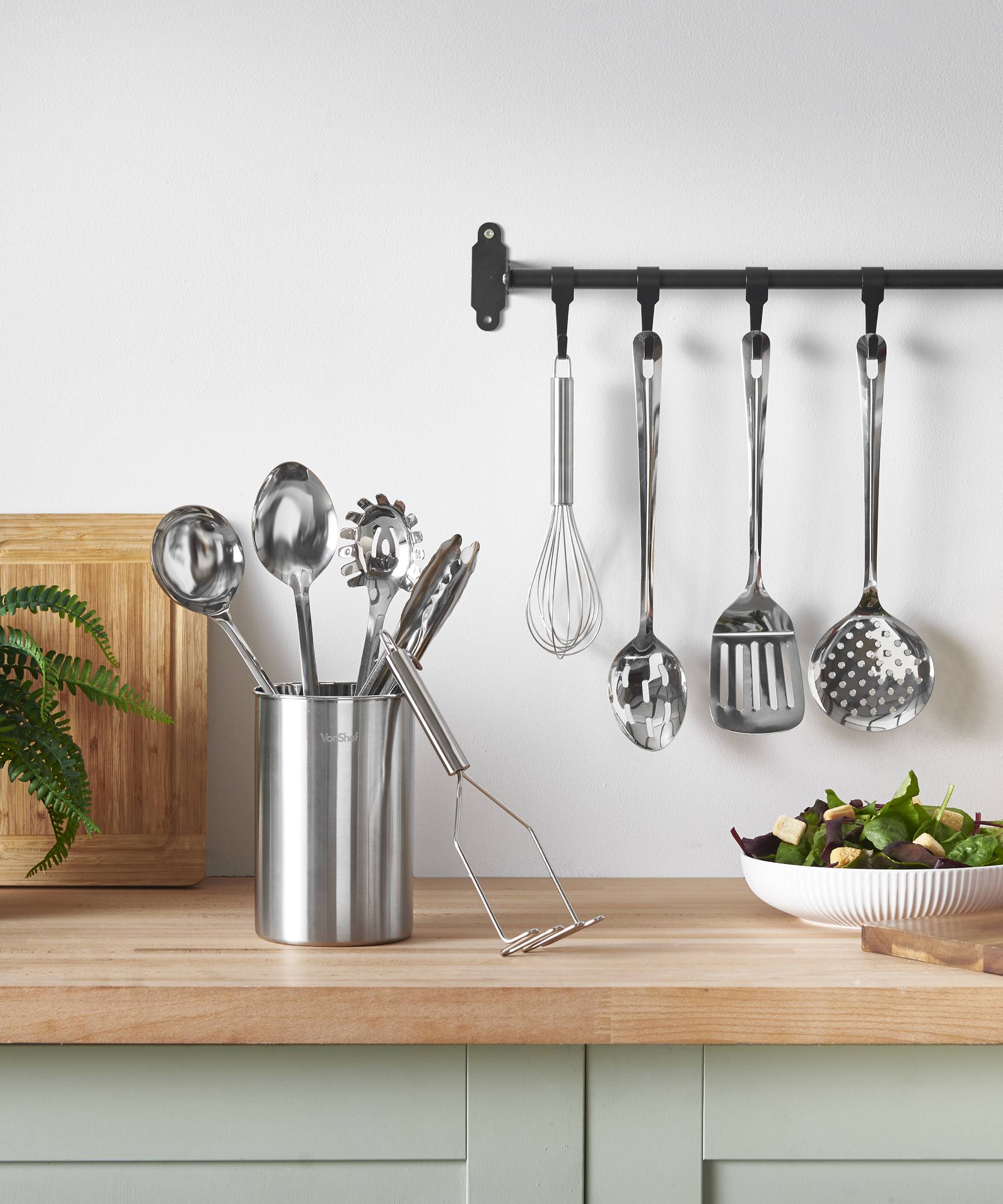
Polishing after cleaning stainless steel is one of the best ways to prevent streaks and smudges. The best way to do this? Polishing stainless steel with olive oil.
Petya shares, ‘Once the stainless steel surface is clean and dry, apply a few drops of olive oil [available at Walmart] or mineral oil to a microfiber cloth and buff it. This will restore the shine and create a light protective layer that will help prevent fingerprints and smudges.
‘Use a minimal amount of oil because too much of it can attract dust. Buff in circular motions for a deeper shine, then finish off with a clean cloth.’
You can use essential oil to clean your stainless steel and buff it up to a sparkling shine at the same time.
16 cleaning methods for stainless steel

1. Vinegar
Looking for a DIY cleaning solution? Petya suggests, ‘Spray white vinegar directly onto the stainless steel surface and wipe it with a clean, dry microfiber cloth. Cleaning with vinegar will cut through any grease on the surface and remove any fingerprints without damaging the finish.’
It is worth noting that the high acid content of white vinegar, like the Great Value Vinegar from Walmart, could damage delicate stainless steel, so clean with caution and test on a small inconspicuous area first.
2. Baking soda
Cleaning with baking soda is also helpful for removing tough buildup from stainless steel, such as burnt-on food. Paul McFayden, metals expert and chairman at Metals4U, shares 'We advise using baking soda mixed with water to form a paste to remove any dirt or grime, as it is non-toxic.'
This is especially useful when cleaning a grill without a brush after a barbecue, he adds. ‘Stainless steel is used for barbecue grills as it's hard-wearing and doesn't rust like most other metals - when cleaning it, you should be really careful not to use anything too abrasive that might damage the metal surface.’
3. Olive oil
There are some surprising everyday items you can clean with olive oil, and stainless steel is one of them.
Ryan Knoll, cleaning expert and owner of Tidy Casa, shares, ‘Forget expensive stainless steel sprays – olive oil makes appliances shine! Just make sure to wipe off dust and debris first (otherwise, you’re just smearing grime around). Use a good-quality olive oil and buff with a microfiber cloth for a streak-free finish. Bonus: It also helps prevent fingerprints!’
4. Essential oils
There are also some surprising ways to clean with essential oils, with head of Solved Punteha van Terheyden recently loving the process of cleaning stainless steel with essential oils.
She shares, 'I tested my DIY essential oil cleaning spray on my stainless steel backsplash and my greasy extractor hood. The results were amazing and made a big difference to how put-together and clean my kitchen looked. It's a 10 out of 10 for me as it required no excessive elbow grease.'
Slide the gallery below for the 'before'.
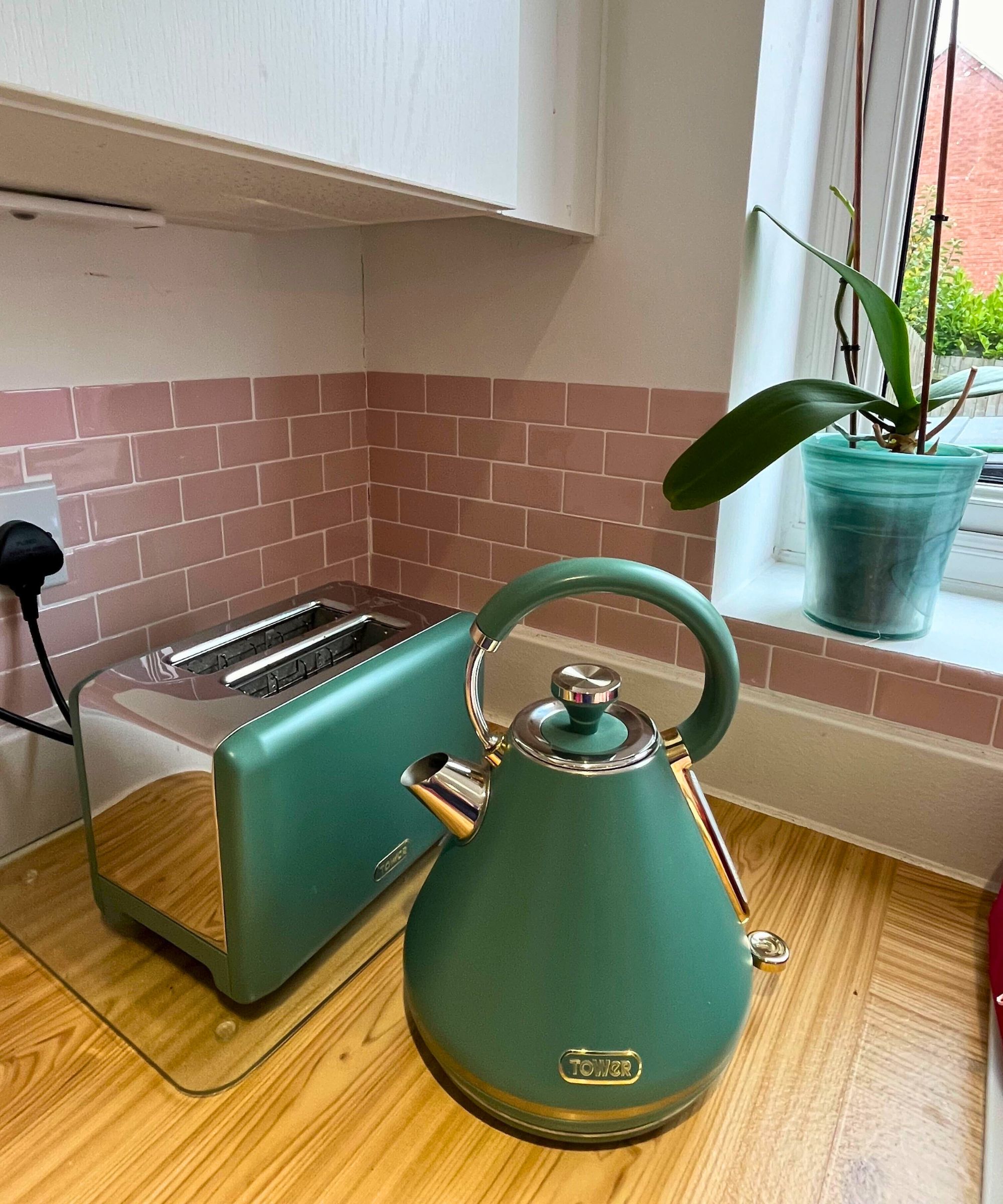

5. Dish soap
Often, less is more. Taylor Riley, partner at AMR US Commercial Cleaning, says, ‘What I like to use for cleaning stainless steel is a few drops of Dawn dish soap [available at Walmart] in warm water. Mix it together and wipe with a microfiber towel.
'This will lift any fingerprints or grease without having to worry about scratching or dulling the surface.’
Dish soap is particularly good as a surfactant, which means it can grab onto dirt and grime, making it easy to clean with water-based solutions or cleaning methods.
6. The Pink Stuff
For tougher stainless steel, such as stainless steel sinks, I love to clean with The Pink Stuff. It is mildly abrasive, helping to remove stuck-on food, but it does not scratch the surface. The Pink Stuff Paste, from Walmart, paired with a Scrub Daddy Sponge, also from Walmart, is a winning combo.
Forrest Webber, cleaning expert and owner of Bear Brothers Cleaning agrees, adding, ‘The Pink Stuff is effective against water stains and marks due to its mildly abrasive formula combined with a blend of cleaning agents that break down mineral deposits and soap scum. Its paste consistency allows for controlled application, helping to lift stubborn stains without excessive scrubbing.’
7. Glass cleaner
Glass cleaners that do not contain ammonia, such as Sprayway Glass Cleaner, from Walmart, can be used to polish stainless steel appliances and hardware, such as cleaning a fridge.
Buff the stainless steel in the direction of the grain using a microfiber cloth for a sparkling result.
8. Stainless steel cleaner
Recommended by several of our experts, the Weimann Stainless Steel Cleaner and Polish, available at Amazon, is a perfect all-in-one product for cleaning stainless steel.
Taylor shares, ‘For polishing, I like Weiman Stainless Steel Cleaner and Polish. This product not only cleans but also provides a protective layer you won’t get from just using Dawn.
'Just keep in mind, “less is more,” when using this product. You’ll need to buff the polish off, and applying too much just makes it more difficult for you.’ You may wish to avoid this on cooking tools such as utensils and pans to avoid food contamination.'
9. Lemon juice
If you live in a hard water area, consider using lemon juice to remove stubborn limescale on stainless steel faucets and shower heads. Soak the limescale in lemon juice for at least 20 minutes before scrubbing it away with a soft-bristled brush, such as the Clorox detail cleaning brushes from Target.
10. Crushed tomatoes
Of all the foods you can clean your home with, crushed tomatoes are not usually at the top. However, it is one of the best solutions for cleaning away discoloration from the bottom of stainless steel pans.
Simply simmer crushed tomatoes in the pan for 30 minutes, keeping an eye on them and stirring occasionally to stop them from burning. Wash out with soap as normal, and the rainbow, oil-slick discoloration should be gone.
11. Bar Keepers Friend
Cleaning with Bar Keeper's Friend is a tried-and-true method for removing tough, caked-on grease and burnt-on food.
It works the same way as any commercial scrub powder. Alicia Sokolowski, adds, ‘To tackle tough stains on your stainless steel surfaces, you can also mix a small amount of AspenClean SuperScrub Powder with water to create a paste. Apply the paste to stained areas using a microfiber cloth or a soft sponge, then rinse and dry the surface thoroughly.
'Make sure to avoid using anything abrasive like steel wool, as this can scratch the surface.'
12. Microfiber cloth
Sometimes, your stainless steel doesn't need anything more than polishing with a plain microfiber cloth. A clean quality microfiber cloth, such as the Everspring Multi-Surface cloths from Target, and a bit of elbow grease can help to buff out streaks and fingerprints in between deep cleans.
13. Club soda
If you want a natural approach for cleaning stove grates and a stainless steel cooktop, try cleaning with club soda. This carbonated, slightly acidic drink can be sprayed onto the worktop and buffed with a clean microfiber cloth to help loosen and remove grease splatters.
14. Rubbing alcohol
Jeremy Yamaguchi, CEO at Cabana, says, ‘One product that can be very effective with cleaning stainless steel is rubbing alcohol. I like to use it with outdoor stainless steel items in particular, like pool ladders. Dilute it in a 1:1 ratio with water, and then take a microfiber cloth, dip it in the solution, and rub that over the stainless steel surface.
'Let it dry, and it will be all set to go. Cleaning with rubbing alcohol doesn’t leave a residue when it’s dry, which is great. It is effective, quick, and actually disinfects the surface.’
15. Steam cleaner
The best steam cleaners and steam mops are perfect for cleaning stainless steel naturally and making a non-toxic home.
I use my steam cleaner to deep clean my whole kitchen, including using the Steam Glove attachment of the Black & Decker 7-in-1 steam mop, available at Amazon, to disinfect and clean stainless steel appliances without the need to scrub.
It instantly melts away grease and leaves behind no streaks.
16. Toothpaste
Ottilie Blackhall, Solved's news writer, recently delved into the surprising things you can clean with toothpaste and gave cleaning hard water stains on a faucet with toothpaste a go.
She says, 'Toothpastes that contain fluoride are a great solution for removing magnesium and salt deposits on stainless steel surfaces. I applied the toothpaste to the stainless steel with my fingers and left it for five minutes before wiping away with a microfiber cloth and water.
'I was genuinely amazed by the results. They were shining, sparkling, and spotless, all in less than 10 minutes.
What to avoid when cleaning stainless steel
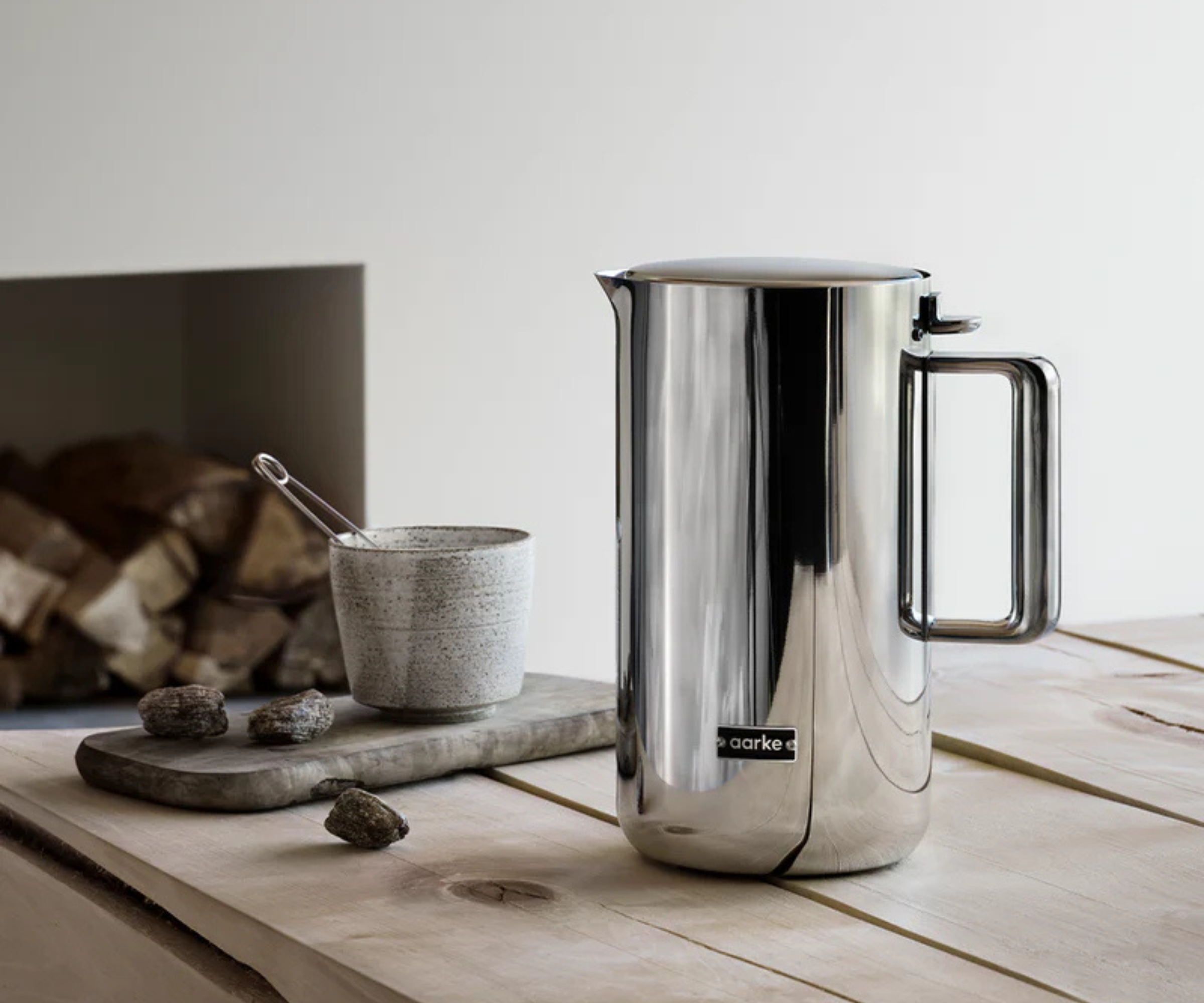
- Avoid abrasives: A common stainless steel cleaning mistake is using a rough pad to scrub. This can result in scratches that are impossible to remove and dull the shine of the steel. Instead, Petya says, ‘Avoid using steel wool or abrasive pads because they can scratch and permanently dull the stainless steel surface.’ A soft cloth, such as a multi-surface microfiber cloth from Target, or specialised stainless steel wipes from Walmart, is more than sufficient.
- Avoid going against the grain: Just like cleaning wood cabinets, stainless steel has a grain (the visible lines that all run in one direction). To clean stainless steel appliances or clean a stainless steel sink correctly, Scott Schrader, professional cleaner and owner of CottageCare, says, ‘Always wipe in the direction of the grain to prevent scratches and achieve the best finishes.’ This ‘go-with-the-grain’ approach should be used for every step of cleaning stainless steel, from dusting to cleaning, to polishing and drying.
What to shop
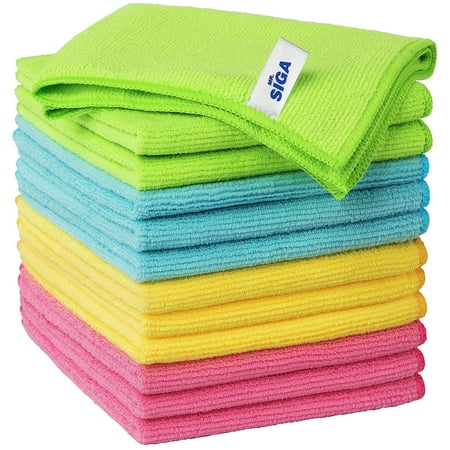
Microfiber cloths collect dust and debris in their fine fibres, removing them from surfaces without scratching or dulling shine. Simply toss them in the washing machine after use to refresh ready for use again.
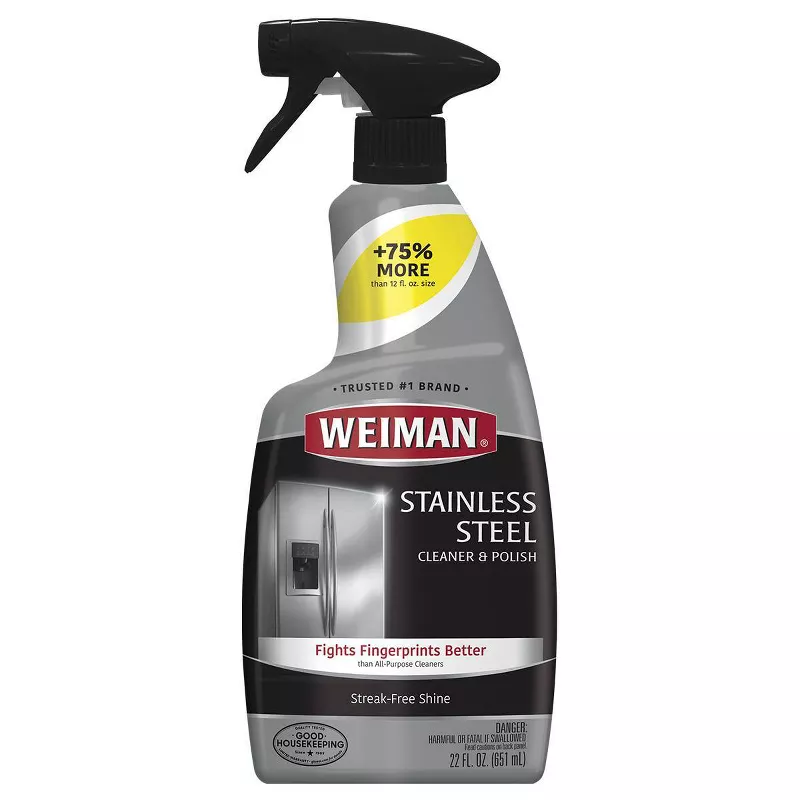
Want to take the guesswork out of cleaning stainless steel? Opt for a commercial stainless steel cleanser and polish to spend less time cleaning each week.
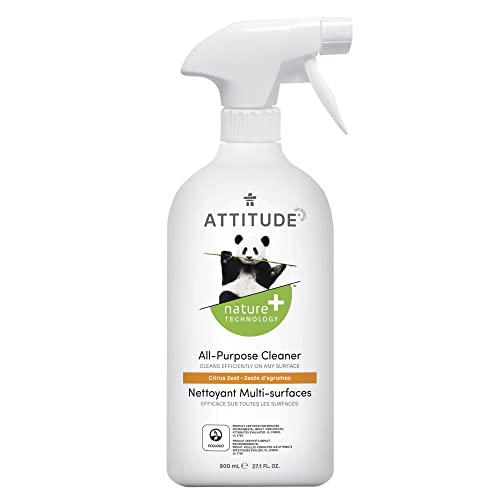
The Environmental Working Group (EWG) has certified Attitude products as non-toxic, meaning they contain no harsh chemicals or artificial compounds. It is perfect for quickly cleaning stainless steel and other surfaces around your home.
FAQs
How often should you clean stainless steel?
How often you clean stainless steel will depend on the type of stainless steel item and how it is used. Stainless steel pans and surfaces will require cleaning after every use. Stainless steel appliances and sinks, on the other hand, can often get away with weekly cleaning and bi-weekly polishing.
Meet the experts
Although stainless steel is generally rust-resistant when used and stored correctly, some rust spots may begin to form if it is left damp for too long. Luckily, we have broken down how to remove rust from stainless steel for you, so you can restore surfaces and tools to new in no time.







